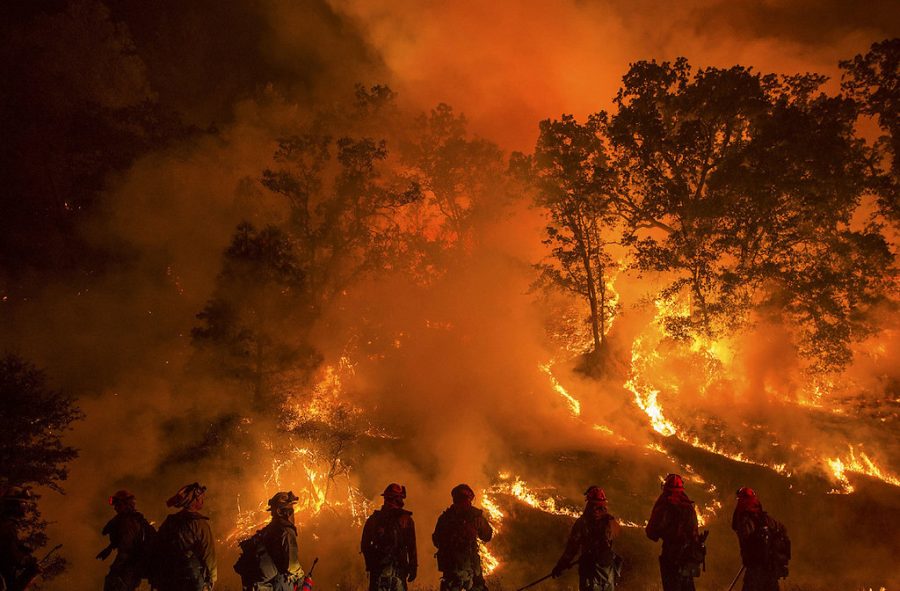Wildfires plague California once again
While the residents of California are returning back to normal after the lockdown, so are the wildfires.
For the past several weeks, parts of northern and central California have been suffering from multiple wildfires and the resulting poor air quality. There are currently ten active fires in northern California, with none of them being fully contained. Combined, the fires have burned around 1,000,000 acres and have caused substantial structural damage to surrounding communities.
The largest fire, the Dixie Fire, started on July 23rd and is burning through Plumas National Forest, Lassen National Forest, Lassen Volcanic National Park, and in five counties: Butte, Lassen, Plumas, Shasta and Tehama. The Dixie Fire alone accounts for more than 730,000 of the acres burned and is only 45% contained. The town of Greenville was completely destroyed by the fire. Not only are towns being affected, but so are California’s water and power supply.
The Dixie Fire is burning towards the Feather River and the California Water Project which provide around 25 million residents with water. The flowing water runs through giant turbines which makes up 15% of California’s hydropower. In addition, 750,000 acres of arable farmland is in danger of being ruined.
Not to mention the billows of smoke created by all the fires negatively impacted the air quality, especially for residents in the Inland Empire and Los Angeles. Hazy skies and hazardous air quality are predicted for those in Los Angeles and the San Gabriel Valley to Santa Clarita, Riverside and San Bernardino. Smoke from wildfires is harmful and can contain bacteria which may increase the risk of contracting COVID-19.
There are certain areas that have been ordered to evacuate. For more information regarding the containment progress of individual fires as well as any new announcements by the fire department, check out the Department of Forestry and Fire Protection’s website and interactive map here.



